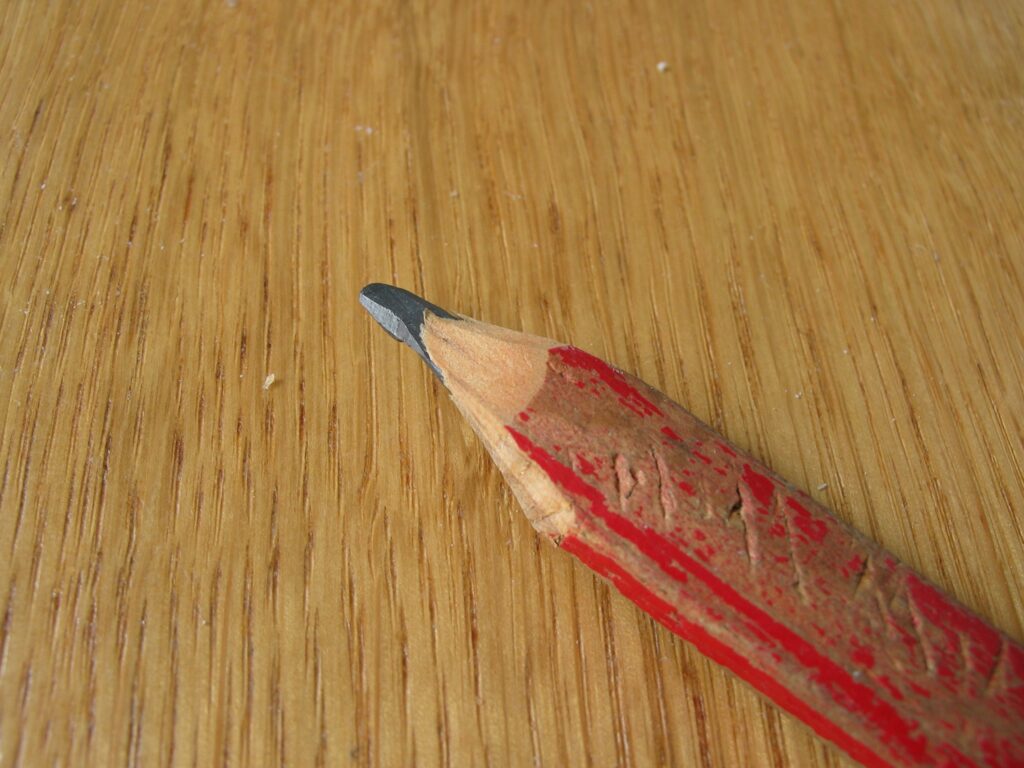Discover why a professional carpenter pencil is the unsung hero of precision woodworking, transforming good projects into masterpieces.
For professional carpenters and woodworking enthusiasts, the right marking tool can mean the difference between precision excellence and costly mistakes. In the world of woodworking, where accuracy is measured in millimetres, the humble carpenter pencil stands as a testament to purposeful design and practical innovation. Recent studies show that over 85% of professional carpenters prefer specialised carpenter pencils over standard writing pencils for their daily marking tasks.
Understanding the Unique Design of Carpenter Pencils
The distinctive flat, rectangular shape of carpenter pencils isn’t just a manufacturing quirk – it’s a masterpiece of functional design. Unlike round pencils that can roll off surfaces, causing frustration and potential safety hazards, carpenter pencils stay exactly where you place them. The rectangular profile measures approximately 1cm by 0.5cm, providing a stable base that’s essential on busy construction sites and workshops. The flat sides serve multiple purposes, allowing craftsmen to use them as impromptu straight edges for short measurements and enabling different marking widths depending on how the pencil is held.
The evolved design also incorporates durability features that make these tools particularly suited for construction environments. Modern carpenter pencils can withstand up to 300% more pressure than standard writing pencils without breaking, thanks to their robust construction and reinforced graphite core.
The Anatomy of a Professional Carpenter Pencil
- Body Construction: Typically crafted from cedar or other sustainable hardwoods
- Graphite Core: Specially formulated for durability and mark visibility
- Dimensions: Standard 175mm length with rectangular profile
- Edge Design: Bevelled edges for precise marking
- Core Integration: Reinforced bonding between wood and graphite
Mastering Marking Techniques with Carpenter Pencils
Professional carpenters employ various techniques to maximise the versatility of their marking pencils. The broad side of the pencil creates visible layout lines perfect for rough carpentry, while the narrow edge excels at precise joinery marks. Expert craftsmen often rotate the pencil during use, achieving line widths from 0.5mm to 3mm without changing tools. For detailed work, such as dovetail joints or mortise and tenon layouts, the sharp corner of a freshly sharpened pencil provides unparalleled accuracy.
Proper Maintenance and Sharpening
Maintaining your carpenter pencil is crucial for optimal performance. Unlike conventional pencils, carpenter pencils require specific sharpening techniques to maintain their unique profile. The traditional method involves using a sharp utility knife, creating a chisel-like point that preserves the pencil’s rectangular shape. Professional carpenters recommend resharpening every 30-45 minutes of continuous use to maintain optimal marking precision.
Choosing the Right Carpenter Pencil for Your Projects
- Soft Grade (4B-2B): Ideal for rough lumber and visible marks
- Medium Grade (B-HB): Perfect for general carpentry tasks
- Hard Grade (H-2H): Best for fine detail work and precise measurements
- Extra Hard (3H-4H): Suitable for outdoor construction marking
Sustainable Practices in Modern Carpenter Pencils
The carpentry industry has embraced sustainability, with over 70% of major carpenter pencil manufacturers now offering FSC-certified products. These environmentally conscious options maintain professional quality while supporting responsible forest management. Modern sustainable carpenter pencils use rapidly renewable wood species and eco-friendly processing methods, reducing their environmental impact without compromising performance.
Expert Tips for Maximum Efficiency
- Store pencils horizontally to prevent uneven wear
- Keep multiple pencils at different sharpness levels for various tasks
- Use a leather or canvas tool roll for protection
- Mark your pencils for easy identification on busy sites
- Maintain a consistent sharpening angle for optimal performance
Professional Applications and Advanced Techniques
Professional carpenters have developed sophisticated marking techniques that leverage the unique properties of carpenter pencils. For instance, the flat edge can be used as a depth gauge for shallow mortises, while the pointed corner excels at marking dovetail angles. Advanced users report up to 40% faster marking times compared to standard pencils when working on complex joinery projects.
Making the Most of Your Investment
While individual carpenter pencils are inexpensive, professionals know that buying in bulk offers significant savings and ensures consistent quality. Bulk purchases can reduce costs by up to 45% compared to individual purchases. Many suppliers offer contractor packs containing 72 or more pencils, ideal for busy workshops or construction sites. Consider maintaining a rotation system, with pencils at various stages of wear designated for different tasks, from rough marking to fine detail work.
By understanding and implementing these professional insights about carpenter pencils, craftsmen can elevate their work to new levels of precision and efficiency. Whether you’re a seasoned professional or an aspiring woodworker, the right carpenter pencil, properly maintained and skillfully used, remains an indispensable tool in the pursuit of woodworking excellence.
FAQ
Why do contractors use flat pencils?
There’s two reasons that a carpenters’s pencil is flat. One pretty obvious it doesn’t roll like a normal pencil. If you’re working on an incline. It stays right where you want it to be the second use
Are carpenter pencils worth it?
Using a well-sharpened carpenter pencil to mark lumber cannot be matched. The rectangular graphite lead draws better on wood, stays sharper longer, and is less prone to breakage.
What is the best pencil to write on wood?
STABILO pencil. These Stabilo pencils are the best. They write on wet wood and pretty much anything else without bleeding or smearing, and they look just like regular pencil lead. We love using them while carving, so we decided to provide them for folks who may not live near an art supply store.
Sources
[1] https://dixonwriting.com/product/dixon-industrial-black-carpenter-pencils/
[2] https://musgravepencil.com/products/998-carpenter-pencil
[3] https://www.youtube.com/watch?v=n_Ex5XM64yE



